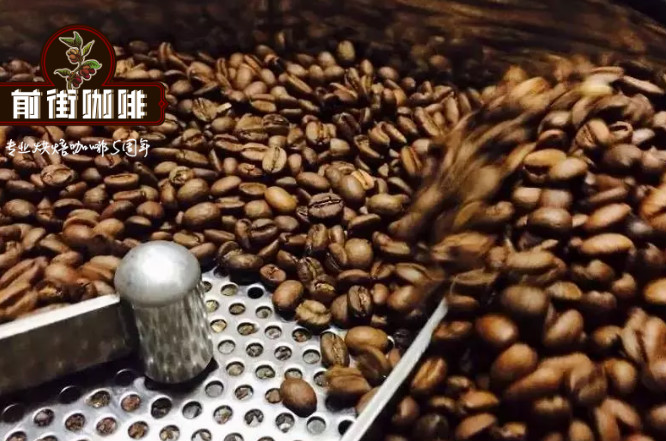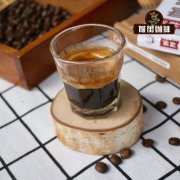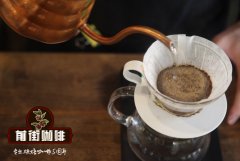Why is the Blue Mountain of Jamaica, the king of coffee, expensive? Suggestion on hand brewing of Jamaican Blue Mountain Coffee

Professional coffee knowledge exchange more coffee bean information please follow the coffee workshop (Wechat official account cafe_style)
Blue Mountains are to coffee what Rolls-Royce is to cars, Lafite is to red wine, and Bolt as for the 100-meter track, almost anyone who has heard of Jamaica Blue Monuntain coffee in Jamaica knows that it is the most expensive coffee in the world. Its high price, complemented by its reputation as "king of coffee", is always sought after by both experts and laymen. It is said that Queen Elizabeth's favorite is Jamaican Blue Mountain Coffee.
In 1717 King Louis XV of France ordered coffee to be grown in Jamaica, and in the mid-1920 s, the Governor of Jamaica, Nicholas. Nicholas Lawes imported Arabica seeds from Martinique and began to plant them in St. Andrews (St.Andrew). To this day, St. Andrews is still one of the three major producers of Jamaican Blue Mountain Coffee, with the other two producing areas: Portland (Portland) and St. Thomas (St.Thomas).
In eight years, Jamaica exported more than 375 tons of pure coffee.
In 1932, coffee production reached its peak and more than 15000 tons of coffee was harvested.
In 1950, the Government of Jamaica established the Jamaica Coffee Industry Committee (the Jamaica Coffee Industry Board), which sets quality standards for Jamaican coffee and oversees the implementation of quality standards to ensure the quality of Jamaican coffee. The Commission awarded special official seals to raw and roasted coffee exported from Jamaica, which is the highest-level national coffee institution in the world.
At present, there are six kinds of marks that can represent the origin of Blue Mountain Coffee, such as Mafis River Embankment Central Factory (MBCE), Blue Mountain Coffee Cooperative Factory (MHCCT), Portland Blue Mountain Coffee Cooperative Factory (PXXSH), Coffee Industry Association (Warren Ford), Coffee Industry Association (St. John's Peak) and Lanli (JAS).
By 1969, the situation had improved because the use of Japanese loans had improved the quality of production, thus ensuring the market. By now, this kind of coffee has reached the point of being feverishly loved.
By 1981, about 1500 hectares of land in Jamaica had been reclaimed for coffee cultivation, followed by investment in another 6000 hectares of coffee land. In fact, today's Blue Mountain area is a small area with a planting area of only 6000 hectares, and it is impossible to grow all the coffee marked "Blue Mountain" there.
Jamaica is also the last country to transport coffee in wooden barrels. Only through this series of stringent standards set by the Jamaican Coffee Industry Authority (C. I. B) can coffee be awarded by the government and officially known as "Blue Mountain".
[it is recommended to brew coffee by hand in the front street]
Kalita fan-shaped, cake cup, kono filter cup
Coffee made with kalita fan, cake cup and kono filter cup will taste full and have a good flavor. In the extraction process, kono filter cup is the use of siphon effect of air pressure for extraction, so coffee powder particles in the initial water saturation, immersion extraction, the concentration will be increased, soluble matter will be brought out with the flow, like the heavy taste of Blue Mountain, will be more recommended to use this.
Prepare 17 grams of powder, water temperature 88 degrees, grinding degree BG 6m (Chinese standard 20 sieve, 47% pass rate), water powder ratio close to 1:14
Technique: first steaming with 30g water, the steaming time is 30s, water is injected against the noodle, the first water injection is cut off to 120g, and then the second water injection is carried out when the water level drops by 1 inch 3-1 / 2, and the water injection stops at 234g. The cooking time is controlled at about 2 minutes and 15 seconds. If there is enough time, you can not use this part of the liquid.
Important Notice :
前街咖啡 FrontStreet Coffee has moved to new addredd:
FrontStreet Coffee Address: 315,Donghua East Road,GuangZhou
Tel:020 38364473
- Prev

Introduction to Honey treatment of Coffee Raw beans in Alida Elida Manor, Panama
Professional coffee knowledge exchange more coffee bean information please follow the coffee workshop (Wechat official account cafe_style) Panama Alida Elida Manor Honey treatment Coffee raw beans introduction Elida Manor is high above sea level, some even located in the Panamanian National Park Reserve, along the way beautiful scenery, good air, rugged mountains, walking like a forest bath; the administrative district of Elida Manor is Bou
- Next

Characteristics and stories of Jamaican Blue Mountain Coffee and Blue Mountain Coffee beans
Professional coffee knowledge exchange more coffee bean information please follow the coffee workshop (Wechat official account cafe_style) Blue Mountain (BlueMountain): the blue mountain that is popular all over the world, the Blue Mountain that is hard to get a bean comes from the tin pickup family. The Blue Mountains are located in the east of the island of Jamaica (Jamaica), because the mountain is surrounded by the Caribbean Sea, and the sun shines directly on every sunny day.
Related
- Does Rose Summer choose Blue, Green or Red? Detailed explanation of Rose Summer Coffee plots and Classification in Panamanian Jade Manor
- What is the difference between the origin, producing area, processing plant, cooperative and manor of coffee beans?
- How fine does the espresso powder fit? how to grind the espresso?
- Sca coffee roasting degree color card coffee roasting degree 8 roasting color values what do you mean?
- The practice of lattes: how to make lattes at home
- Introduction to Indonesian Fine Coffee beans-- Java Coffee producing area of Indonesian Arabica Coffee
- How much will the flavor of light and medium roasted rose summer be expressed? What baking level is rose summer suitable for?
- Introduction to the characteristics of washing, sun-drying or wet-planing coffee commonly used in Mantenin, Indonesia
- Price characteristics of Arabica Coffee Bean Starbucks introduction to Manning Coffee Bean Taste producing area Variety Manor
- What is the authentic Yega flavor? What are the flavor characteristics of the really excellent Yejasuffi coffee beans?

